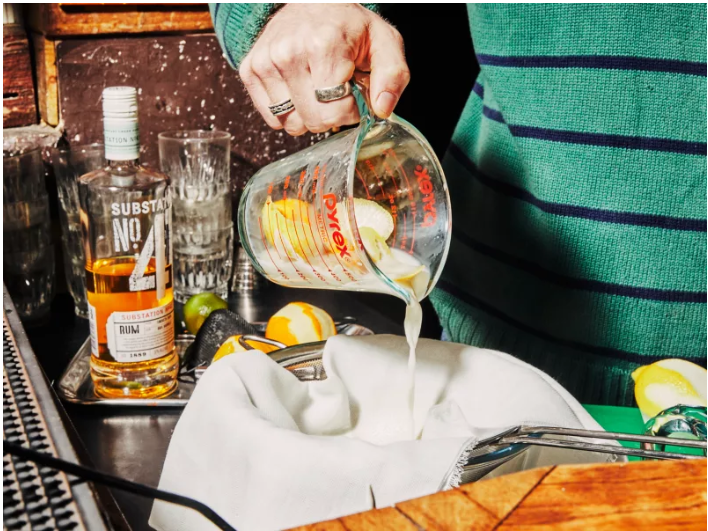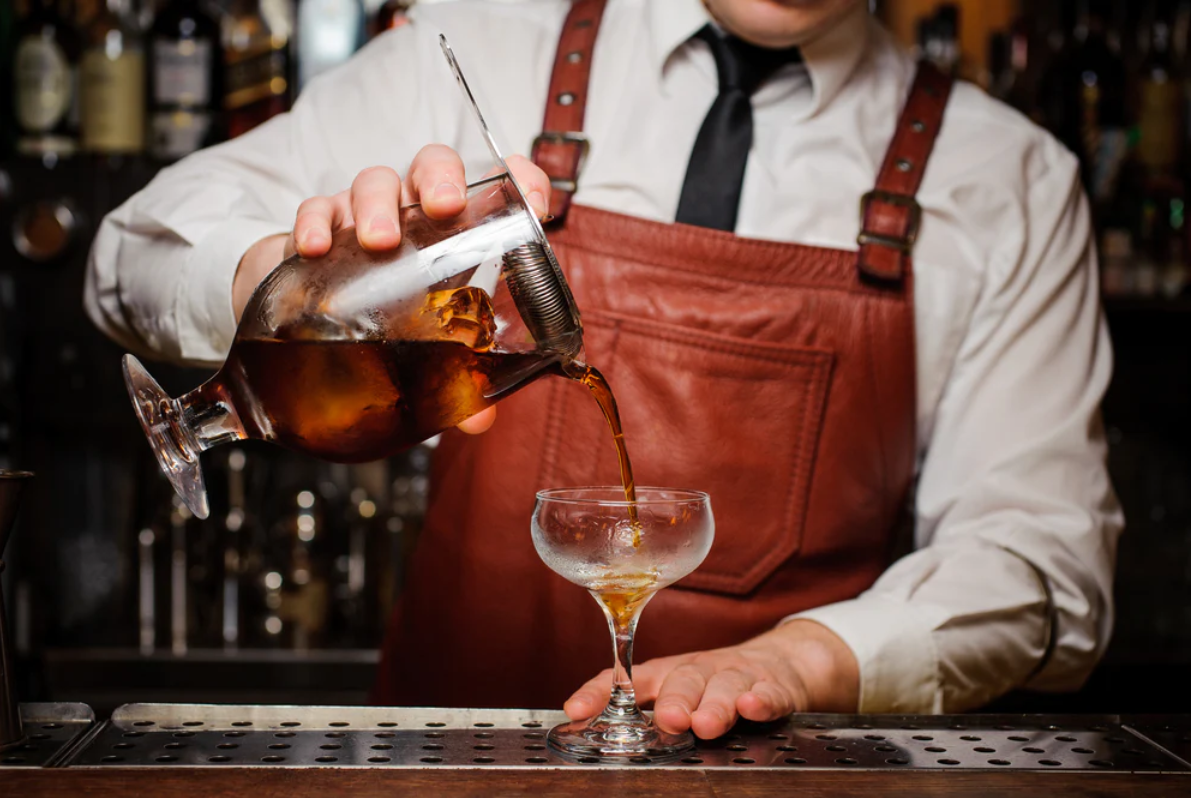Ask a hundred people to predict the dawn of India’s golden era of cocktails, and most will admit that we are cruising through it right now. With an increasing kitty of bars making it to Asia and the World’s 50 Best list; an Indian or an international bar visiting your city every week, and cocktail festivals on loop, it’s time to toast the ‘shake and stir’ segment. Brands are also doing their bit to celebrate innovation and champion celebrity bartenders. Some complain
of excess, while others believe the pie has only just been put in the oven. But the problem with hurtling towards the
next best ingredient; grabbing another top award, and carpet bombing your Instagram feed, is the slam-dunk cookie-cutter, unintelligent adapting of drinks and techniques, overselling of ideas, which sidelines what a true cocktail experience was supposed to be. If India is to matter, there has to be a collective exchange, leaving a few tricks behind, and reviving those that got us here in the first place.
INGREDIENTS
India has a ‘problem of plenty’. Ask for a citrus and you will get over a hundred varieties. The same goes for mangoes,
spices, rice, grains, and more. With an average bar menu rarely exceeding a dozen drinks, there’s an overwhelming
majority of ingredients that are left out. So junk the need to champion scarcely available international ingredients. Pandan, an aromatic leaf, has overwhelmed India recently. It gives an overcooked, wet, starchy, rice-like taste which can easily become overbearing after a few. It is expensive and seasonally available. So why fixate on it? “There shouldn’t be an over-dependency on imported ingredients, whether it’s grapefruit, Italian lemons, or Malta oranges; anything that can’t be replicated locally,” says Vedant Mehra, Community Manager for Greater Than Gin.

Another common recurrent in Indian bars are acids. We haven’t even championed our local souring agents and citruses yet, but insteadare now sporting chemistry lab bottles sitting next to mixing tins. Would you like choosing from menus that feature ingredients such as citric, malic, tartaric, lactic, and ascorbic acids? “Remember
a bar was meant to be a fun place, not a science lab” says the fraternity’s legend, Shatbhi Basu. “I see them as salt and pepper shakers in fine dining restaurants, that have vanished completely. No self-respecting chef puts the onus to balance salt on its diners. It’s deemed offensive and embarrassing for the kitchen brigade. The same goes for bartenders. Isn’t it their job to balance a drink? Acids are a lazy bartender’s ingredient. I see them and judge the bar and its crew, who probably haven’t hustled enough to understand the ingredients and the subtle art of balancing that solicits developing a palate in the first place,” she adds.
GARNISHES
Another trend that has overstayed its welcome: Dehydrated garnishes. “Purposeful bartending is key; dehydrated garnishes are not operational. Inedible garnishes should be a thing of the past”, says Nitin Tewari. They serve no purpose, much like the paper umbrellas, which have fittingly disappeared. Another, the redundancy of mint sprigs in contemporary mixology. When was the last time you relished an entire sprig in a drink? Although, their visuals, refreshing scent, and bright green contrast are amazing, that function ality can easily be replaced by mint oils and sprays. “Mint has become an unimaginative bartender’s easy go-to. There’s definitely enough creativity to replace it” says Karthik Kumar, a Bangalore-based beverage programme creator.

TECHNIQUES
During Covid, two things that excited bartenders were creating their clear ice and milk clarification. Clarification is an age-old technique that has been revived. But we’ve gone overboard with it now. Clarifying a classic Paper Plane and turning it milky or an already textural Pina Colada to be put through the process makes no sense. While milk clarification is a welcome idea, it has been put to play on drinks that have made them useless, think Negroni. “Just because it’s done globally, there isn’t an imperative to replicate it in India. It works well if there’s a requirement, or a point to be made”, says Nitin Tewari, Founder of Mr. Bartender. Also there’s a case to be made for aligning with changing dietary preferences. Chef Udit Maheshwari of Amaltas, an Indian Tapas restaurant in the capital shares: “We are seeing an increasing number of vegans, lactose intolerants, and keto-followers who can’t enjoy these clarified drinks. New ways have to be explored.” We concur.

With bars turning into science labs, there are other techniques that are gaining currency. Think rotovap, sous-vide, nitro infusion, and more “Menus nowadays need a dictionary. Why should I have to google while reading menus? At least, provide a glossary somewhere on the menu to make it easier” says Vedant Mehra. ”Rotovap is an expensive tool that provides limited yield. It’s unfair to pass that cost to the consumer, especially when they don’t
understand its application,” says Yangdup Lama, founder of two awarded bars, Sidecar and Cocktails & Dreams in Delhi NCR. Using these techniques doesn’t necessarily make for better drinks.
With clarification comes batched drinks: Multiple portions are prepped together and stored, only to be poured in the glass and served. While that is fantastic, speedy, consistent, and convenient, it is the food equivalent of ready to eat meals, microwavable TV dinners, or plane food. Once you make that comparison, you will understand while it’s convenient, it isn’t the way to live. Bars have always been a place for conversations, showmanship, and displaying skills. Batched cocktails takes all that away.
”In 2023, a Martini is certainly not necessary on a menu. However, every bartender or bar worth its salt, or in our case its brine, needs to know how to make a more than decent Martini and serve it cold. It is one of those drinks which will never die and people make pilgrimages for,” says Arijit Bose, co-founder of Countertop, Jerry’s Cocktail, and Bar Spirit Forward in Bengaluru. How a bar makes and regards its Martinis says a lot, making a case for their revival, whether the vermouth is drawn from the fridge, limes used instead of lemons, the pick of glassware, quality of olives, choice of gin(s), and more.

BRING BACK
With so much being asked to be moved out, it makes space for a lot to come in. Shrubs are concentrated syrups with vinegars that could be the easiest feature at a bar. They are cost effective, can use scraps well, are effortlessly created, and bring a burst of flavour and vibrancy to the drink. Ani Sharma, Beverage Head for Perch Wine & Coffee Bars and Delhi’s best-kept-secret bar, Hoot’s, brought them to the spotlight a few moons ago. “It’s time for their return”, he declares.
Edible garnishes are like bread to Indian dishes. They complete your dal or butter chicken. Tuilles, fruits, tarts, compotes, gels, curds, biscottis, cookies, and oils make for better garnishes than peels, flowers, mint, and
paper umbrellas. They bring in another texture, vivaciousness, and practicality to the drink, showcasing the extra effort the team has invested in elevating the drink. Who doesn’t like an extra nibble and care?
Shatbhi Basu also urges the need for recreating the synergy between food and drink: “Let the cuisine guide your drinks programme and maintain a harmony between the two”. It only makes sense for the two to co-exist. “It also does away with the mishmash of excessive ingredients, keeping the focus on flavours, and finally on guests and ‘gratification’. And finally, I press for using Indian produce. Be it in their ingredients, wines and spirits, techniques, equipment, and verbiage. Our heritage is older than most, and so is the hospitality we offer. Put them all together, tie them down with our unmatchable skills, and present them with a smile to create an experience one would rush to leave offices and homes for. Cheers!

